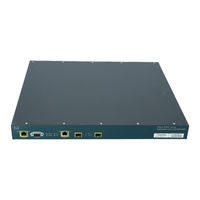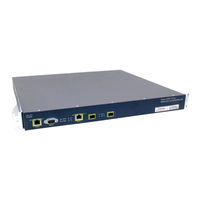Cisco AIR-WLC4404-100-K9 Manuals
Manuals and User Guides for Cisco AIR-WLC4404-100-K9. We have 2 Cisco AIR-WLC4404-100-K9 manuals available for free PDF download: Configuration Manual, Installation And Configuration Manual
Cisco AIR-WLC4404-100-K9 Configuration Manual (256 pages)
Wireless LAN Controller
Brand: Cisco
|
Category: Controller
|
Size: 8.28 MB
Table of Contents
Advertisement
Cisco AIR-WLC4404-100-K9 Installation And Configuration Manual (46 pages)
4400 Series Wireless LAN Controllers
Brand: Cisco
|
Category: Controller
|
Size: 2.67 MB

